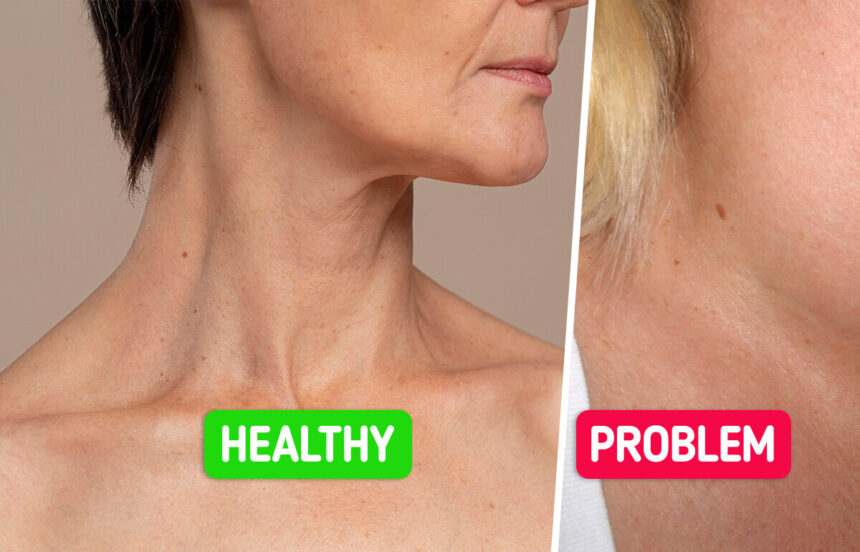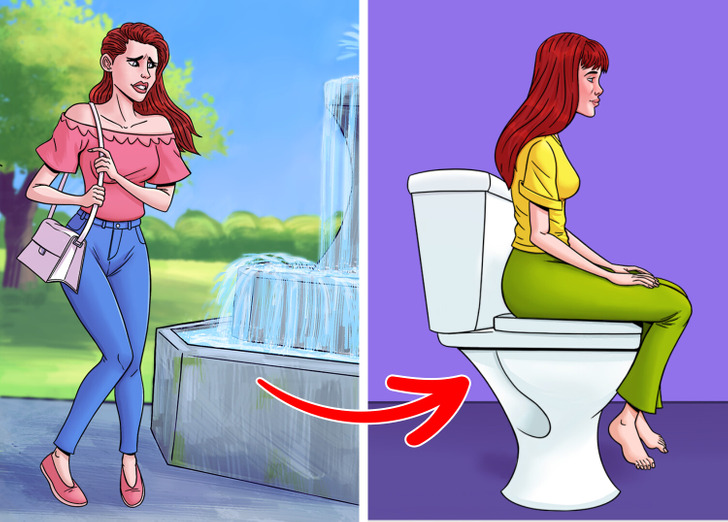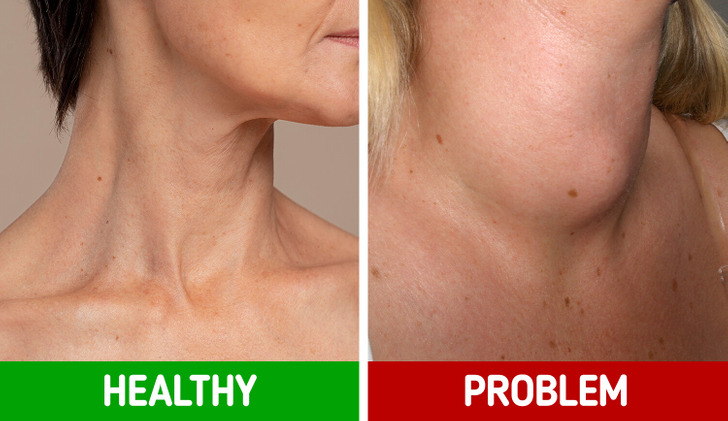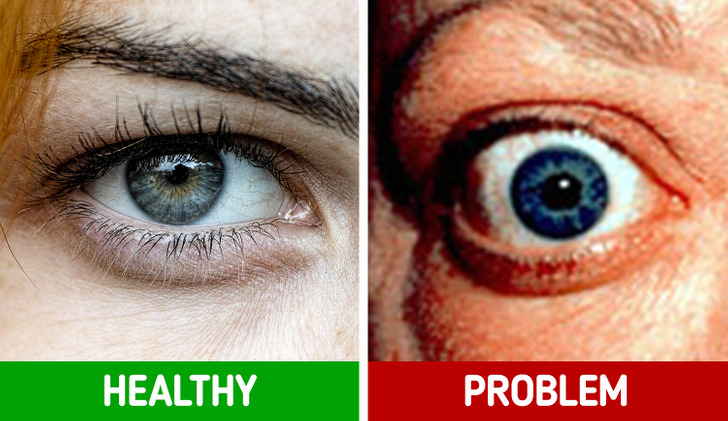At times, you might experience a sense of disconnection from yourself, and it could be linked to your thyroid’s functioning.
This tiny gland plays a crucial role in regulating various aspects of your well-being, such as energy levels and mood. When it doesn’t function properly, you may feel lethargic and irritable.
However, the symptoms can often be subtle or easily dismissed.
Being attentive to these signs early on is essential to avoid more significant issues down the road.
If you’ve been feeling unusual, it’s important to pay attention to your body’s signals.
There are six key warning signs that might indicate thyroid problems, and identifying them promptly can be vital. Let’s explore what you should be on the lookout for.
THE INFORMATION PROVIDED HERE IS FOR EDUCATIONAL USE ONLY AND IS NOT MEANT TO REPLACE PROFESSIONAL MEDICAL ADVICE. CONSULT YOUR PHYSICIAN ABOUT YOUR HEALTH AND MEDICAL ISSUES.
1. Sensitivity to hot and cold temperatures
Your thyroid is a small but powerful part of your body that helps control a lot of things, including your metabolism and body temperature.
When it’s not working right, it can mess with how you handle heat. Most people don’t realize that trouble with your thyroid can make you feel extra uncomfortable in warm conditions.
This is especially common in people with an overactive thyroid (hyperthyroidism), but it can happen with any thyroid issue, even if it’s linked to autoimmune problems.
If you start feeling like you just can’t handle the heat, it could be a sign your thyroid is struggling.
Paying attention to this less obvious symptom could help you catch thyroid issues early and get the right treatment before it gets worse.
If you find it hard to stay warm or feel cold all the time, it could be a sign of hypothyroidism, where your thyroid isn’t working like it should.
On the other hand, if you feel overheated or can’t handle the heat, it could point to hyperthyroidism, where your thyroid is working overtime.
Both of these thyroid issues can mess with your body’s ability to regulate temperature.
So, if you’re struggling with hot or cold weather more than usual, it might be worth looking into your thyroid health.
It could be a sign that something’s off and needs attention.
2. Needing to pee more often than usual
While the thyroid doesn’t directly control your bladder, an imbalance in thyroid hormones can still mess with your urinary function.
Whether you have hypothyroidism (underactive thyroid) or hyperthyroidism (overactive thyroid), changes in hormone levels can affect your kidneys, leading to more frequent trips to the bathroom.
This can sometimes cause symptoms of overactive bladder (OAB), like needing to pee more often than usual.
So, if you’re noticing changes in how often you’re running to the bathroom, it could be connected to your thyroid health.
3. Excessive thirst
If you have an overactive thyroid, symptoms can vary from person to person.
So, if you’re feeling extra thirsty, don’t panic just yet — but it’s a good idea to keep an eye on other signs like unexpected weight loss, shaky hands, feeling exhausted, anxiety attacks, or lightheadedness.
If you notice a few of these symptoms along with that excessive thirst, it might be time to see your doctor and get things checked out.
It’s always better to be safe and catch any issues early.
4. Unusually fast heart rate
Hyperthyroidism, or having too much thyroid hormone, is rare, affecting less than 1% of people. But it can still have a serious impact on your heart.
Some common signs include trouble sleeping, feeling too hot, sweating a lot, weight loss, feeling constantly hungry, and having loose stools.
Too much thyroid hormone makes your heart work harder and faster, which can lead to abnormal heart rhythms, like atrial fibrillation, where the heart’s upper chambers beat out of sync.
You might also feel palpitations, which is that sudden, uncomfortable awareness of your heartbeat.
High blood pressure is another possible symptom.
For people with blocked or stiff heart arteries, the combination of a racing heart and high blood pressure could even lead to chest pain.
If you’re noticing these symptoms, it’s definitely worth talking to your doctor.
5. Swelling in your neck
A goitre is a lump or swelling at the front of your neck caused by an enlarged thyroid. Your thyroid is a small gland that makes hormones, and when it gets bigger, it can form a goitre. While goitres aren’t usually a big concern, it’s a good idea to have a doctor check it out.
The main sign of a goitre is a swelling at the front of the neck, and it’s usually painless.
If you notice anything like this, it’s best to get it checked by your GP just to be sure.
The swelling usually appears at the lower front of the neck.
You may also have other symptoms, including:
- a cough that does not go away
- a hoarse voice or voice changes
- feeling like something is stuck in your throat
- a wheezing noise when you breathe
- finding it hard to swallow or breathe
6. “Staring” or “bulging” eyes
Thyroid eye disease (TED) is an autoimmune condition where the muscles and fatty tissue around your eyes get inflamed.
This inflammation can make your eyes appear to bulge or stick out, often leading to a “staring” look. You might also notice your eyelids and eyes becoming red and swollen.
In some cases, the inflammation affects the muscles controlling eye movement, which can cause your eyes to become misaligned, leading to double vision.
Although it’s rare, TED can cause serious problems like blindness due to pressure on the eye nerve or ulcers on the cornea.
TED is most often linked to an overactive thyroid caused by Graves’ disease, but it can also occur in people with a normal or underactive thyroid. Around 25% of people with Graves’ disease will develop TED at some point.
It’s also called Graves’ orbitopathy (GO) or Graves’ eye disease (GED).
The most common symptoms of TED include:
- Bags under the eyes
- Blurred/double vision
- Change of the eyes’ appearance (usually staring/bulging)
- Difficulty moving the eyes
- Dry or watery eyes
- Gritty feeling in the eyes
- Low tolerance of bright lights
- Pain in or behind the eye — especially when looking up, or sideways
- Redness of the lids and eyes
- Swelling or fullness in one or both upper eyelids













